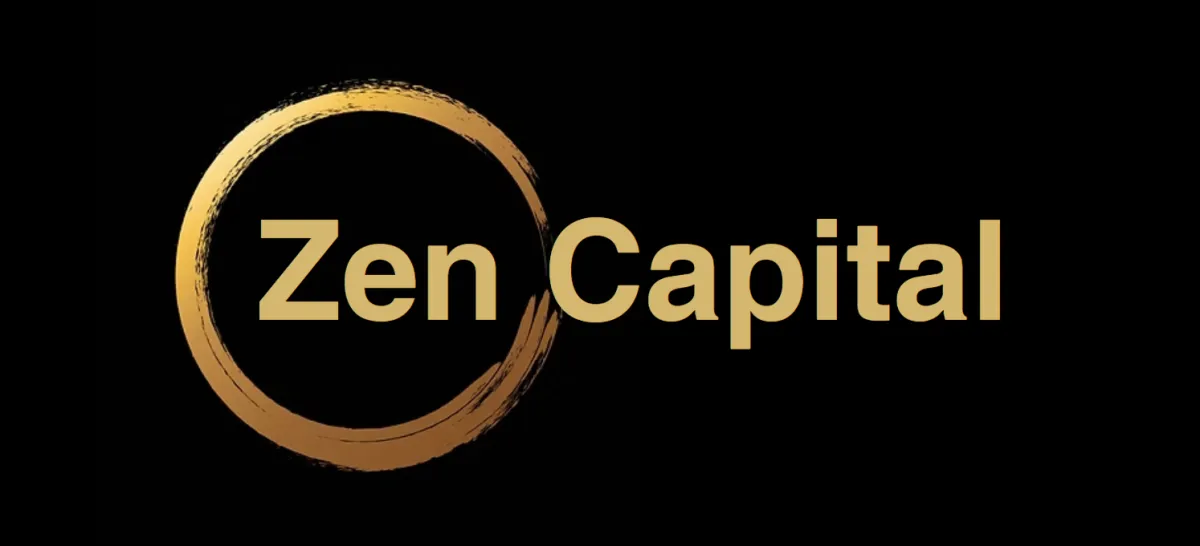
Investment Property vs. Super: Where Should Your Retirement Wealth Live?
Picture this: You're 45, your career is humming along nicely, and you've got $100,000 burning a hole in your pocket. Your colleague just bought their third investment property and won't stop talking about capital gains. Meanwhile, your financial planner keeps emphasizing super contributions. Your parents swear by bricks and mortar, but your younger brother is maxing out his concessional contributions.
Sound familiar? You're facing one of Australia's biggest retirement wealth dilemmas: where should your money actually live to build the retirement you want?
With property prices that have historically delivered strong returns and a superannuation system offering some of the world's best tax concessions, this isn't just about numbers—it's about aligning your wealth-building strategy with your values, risk tolerance, and vision for financial freedom.
The Tale of Two Wealth Giants
Australia offers two dominant pathways for building retirement wealth, each with passionate advocates and proven track records:
Superannuation represents the ultimate tax-efficient, professionally managed, "set and forget" approach to wealth building. With contributions taxed at just 15%, earnings capped at the same rate, and tax-free withdrawals after 60, it's designed to turn even modest regular contributions into substantial retirement capital.
Investment Property offers the allure of tangible wealth—something you can see, touch, and directly control. With the potential for both rental income and capital appreciation, plus significant tax deductions, property has been the backbone of many Australian fortunes.
But here's the critical question: which approach truly serves your long-term financial freedom and aligns with your values?

Superannuation: The Tax-Efficient Powerhouse
What Makes Super So Compelling?
Superannuation isn't just a retirement account—it's a wealth multiplication machine designed by the Australian government to encourage long-term savings. Here's how it works:
The Tax Arbitrage Advantage
Concessional contributions taxed at just 15% (vs. your marginal rate of potentially 32.5% or 45%)
Investment earnings capped at 15% tax within the fund
Capital gains taxed at only 10% for assets held over 12 months
Zero tax on earnings once you enter pension phase after 60
For a high earner on the 45% tax rate, this represents a 30 percentage point tax saving on contributions alone—a massive head start that compounds over decades.
Professional Management and Diversification Your super fund employs investment professionals who spread your money across:
Australian and international shares
Property trusts and direct property
Bonds and fixed interest
Alternative investments
Multiple fund managers to reduce single-manager risk
This instant diversification would cost hundreds of thousands to replicate directly.
The Compounding Effect With lower tax drag, more of your returns stay invested to generate future returns. Over 30 years, this creates a snowball effect that can dramatically outpace investments held outside super.
The Super Reality Check
Limited Access Your money is locked away until preservation age (55-60 depending on when you were born) or age 65. Early access is extremely limited and carries penalties.
Contribution Caps For 2024-25:
Concessional contributions: $30,000 annually
Non-concessional contributions: $120,000 annually
These caps limit how much can benefit from super's tax advantages
Fee Impact While fees appear small as percentages, they compound over decades. A difference between 1% and 2% annual fees can reduce your final balance by up to 20% over 30 years.
Less Direct Control Unless you establish an SMSF (with its own complexities), you're limited to the investment options your fund provides.
Who Super Suits Best:
Long-term planners who can wait until preservation age to access funds
High-income earners maximizing the tax arbitrage opportunity
Hands-off investors preferring professional management
Diversification seekers wanting broad market exposure
Tax-efficiency focused individuals prioritizing after-tax returns
Investment Property: The Tangible Wealth Builder
The Property Proposition
Investment property offers something super can't: complete control over a tangible asset that you can see, touch, and directly influence. Here's what makes it compelling:
Direct Control and Value-Add Potential
Choose the exact property, location, and timing
Implement renovation strategies to increase value
Select tenants and manage rental pricing
Decide when to buy, hold, or sell
Capital Growth Potential Australian property has delivered strong long-term capital growth, with many markets seeing substantial appreciation over the past two decades.
Rental Income Stream Properties generate ongoing rental income, providing cash flow that can supplement other income or be reinvested.
Tax Benefits
Negative gearing: Offset property expenses against other income
Depreciation deductions: Claim depreciation on building and fixtures
50% CGT discount: Only half the capital gain is taxed if held over 12 months
Deductible expenses including loan interest, management fees, repairs, and rates
The Property Reality Check
High Entry Barriers
Stamp duty alone: 3-5.5% of property value (potentially $25,000+ on a $500,000 property)
Legal fees: $1,000-$2,000+
Building inspections, lender charges, and deposit requirements
Total upfront costs can easily exceed $150,000 for a $500,000 property
Substantial Ongoing Costs Property holding costs (excluding mortgage interest) typically consume 25-30% of gross rental income:
Property management: 6-15% of rental income
Repairs and maintenance
Landlord insurance (~$1,200 annually)
Council rates and water charges
Strata fees (for apartments)
Vacancy periods (budget 2-4 weeks annually)
Illiquidity Challenges Converting property to cash for retirement income is "lumpy"—you typically must sell the entire asset or mortgage it. This creates:
Market timing risk (forced sales during downturns)
High transaction costs (agent commissions 1.5-3% plus legal fees)
Difficulty creating steady income streams
Concentration Risk A single property represents a highly concentrated investment, exposing you to specific location and market risks.
Who Property Suits Best:
Control enthusiasts wanting direct asset management
Substantial capital holders who can handle high entry costs
Active investors comfortable with hands-on management
Cash flow positive individuals able to fund ongoing expenses
Long-term holders who can ride out market cycles
Tangible asset preferences for those who like "bricks and mortar"
The Critical Comparison
Factor
Superannuation
Investment Property
Tax on Growth
Max 15% (0% in pension)
Marginal rates on rent; 50% CGT discount
Initial Capital
Start with $0 (employer contributions)
$100,000+ typically required
Ongoing Costs
0.5-1.5% annually
25-30% of gross rental income
Liquidity
Locked until preservation age
Highly illiquid, sale can take months
Diversification
Instant across multiple asset classes
Single asset concentration
Control Level
Limited (unless SMSF)
Complete direct control
Management
Professional fund managers
Self-managed or property manager
Income in Retirement
Structured, tax-free pension
Rental income or forced asset sales
Bankruptcy Protection
Generally protected
Potentially at risk
Tax Impact Analysis: The Numbers Tell the Story

High Earner Example (45% tax rate):
$30,000 Investment via Super:
Contribution tax: $4,500 (15%)
Amount invested: $25,500
20-year growth at 7% p.a.: ~$99,000
Tax on earnings: ~$11,000 (15% on growth)
Final value: ~$88,000 (tax-free after 60)
$30,000 Investment via Property (after-tax dollars):
Amount available: $16,500 (after 45% tax)
Need to borrow to reach meaningful property investment
Rental income taxed at 45%
Capital gains: 50% discount still means 22.5% tax
Ongoing cash flow demands for negative gearing
The tax mathematics heavily favor super for wealth accumulation, especially for higher earners.
The Hybrid Approach: Best of Both Worlds
For many Australians, the optimal strategy combines both approaches strategically:
The Smart Sequencing Strategy:
Phase 1: Maximize Super Tax Benefits
Contribute the maximum concessional amount ($30,000)
Consider spouse contributions if applicable
Use salary sacrifice to optimize tax efficiency
Phase 2: Property Investment (If Suitable)
After maximizing super concessions
With substantial additional capital available
When you can comfortably handle ongoing costs and illiquidity
Phase 3: Integrated Management
Consider property within SMSF (if balance >$200,000)
Balance growth assets vs defensive assets across both vehicles
Plan exit strategies for retirement income needs
Benefits of the Hybrid Approach:
✓ Tax efficiency from super's concessions ✓ Diversification across asset classes and structures
✓ Control through direct property ownership ✓ Flexibility in retirement income strategies ✓ Risk management through multiple income sources

Your Decision Framework: Finding Your Path
Ask Yourself These Critical Questions:
Financial Capacity
Do I have substantial capital beyond super contributions ($100,000+)?
Can I sustain ongoing property costs that may exceed rental income?
What's my time horizon for accessing this wealth?
Risk and Control Preferences 4. How important is direct control over my investments? 5. Am I comfortable with property's illiquidity and concentration risk? 6. Do I prefer hands-on or hands-off wealth management?
Tax Efficiency Priority 7. What's my current marginal tax rate? 8. Am I maximizing super's tax advantages first? 9. How do I want my retirement income taxed?
Values Alignment 10. Does property ownership align with my environmental values? 11. How important is supporting ethical investment approaches? 12. Do I prefer supporting the broader economy through super funds?
The Values-Driven Perspective
For conscious investors, consider these additional factors:
Environmental Impact
Super funds increasingly offer sustainable investment options
Direct property allows choice of energy-efficient, sustainable properties
Consider carbon footprint of investment choices
Social Impact
Super funds can support renewable energy and social infrastructure
Property investment affects local housing affordability
Both can align with ethical investment principles
Economic Contribution
Super funds support broader economic growth through diversified investments
Property investment contributes to local construction and services
Consider broader economic implications of your choices
The Verdict: It Depends (But Here's How to Decide)
Choose Super If You:
Are a high-income earner seeking tax efficiency
Prefer professional management and instant diversification
Have a long time horizon until retirement
Want a "set and forget" wealth-building approach
Value bankruptcy protection and regulatory oversight
Choose Property If You:
Have substantial capital and ongoing cash flow capacity
Want direct control over your investment decisions
Are comfortable with illiquidity and active management
Believe strongly in property's long-term capital growth
Can handle the complexity and costs involved
Choose Both If You:
Can afford to maximize super contributions AND invest in property
Want diversification across different asset classes and tax structures
Have the capacity to manage both approaches effectively
Seek to optimize both growth and income potential
Your Next Step: Professional Guidance for Integrated Wealth Strategy
The choice between investment property and superannuation—or the optimal combination of both—isn't just about mathematical calculations. It's about creating a retirement wealth strategy that aligns with your values, risk tolerance, and vision for financial freedom.
Ready to build a retirement wealth strategy that truly reflects your goals and values?
Adrian Nathaniel, Managing Director of Zen Capital and author of "Ancient Money Wisdom," specializes in helping conscious investors create integrated wealth strategies that balance financial optimization with personal values. With his unique combination of financial planning expertise and holistic approach, Adrian helps clients navigate the complex interplay between property and super to build meaningful, sustainable wealth.
Whether you're trying to decide between property and super, wanting to optimize your tax efficiency across both vehicles, or seeking to align your wealth strategy with your personal values, Adrian's comprehensive approach ensures your retirement planning serves both your financial goals and your deeper principles.
Contact Adrian Nathaniel today for a complimentary consultation to discuss your retirement wealth strategy.
📧 [email protected]
📞 Book your free 15-minute "Discover Your Pathway to Freedom" session
Don't let another year pass wondering where your retirement wealth should live. Take action today to create a strategy that builds the future you want while staying true to what matters most to you.
